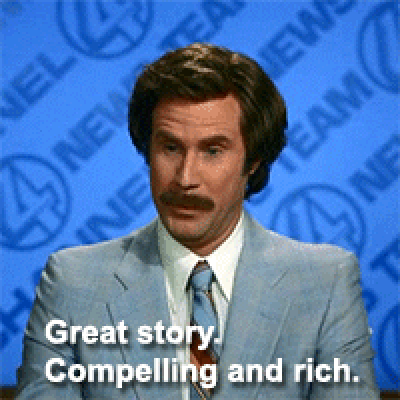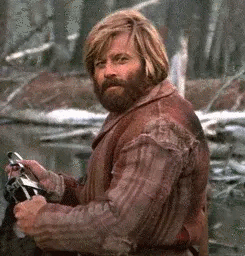Because of my job title, I often get asked “Can you explain how blockchain works?”, or “What’s the purpose of blockchain in the energy sector?” When this happens, I feel overwhelmed with thoughts.
“Well, you see, the big thing about it is that it’s a distributed ledger, and every change in the data is cryptographically signed, and it natively supports transaction of value and protects against double spending without a central party, and you can prove how each piece of data is processed, and …”
Then I usually get the following reaction:

But it’s really been bugging me. Why do I suck so much at explaining it? Why is it so hard?
After giving it quite some thought, I’ve come to the conclusion that I should embrace the fact that it is hard, and give blockchain the credit it deserves. Blockchain is not a technology that can be explained in 5 minutes. It’s not even one technology for that matter! It’s actually a collection of well-established cryptographic technologies. However, although all of these technologies existed before the invention of blockchain, they’re not exactly common knowledge for people outside of computer science. In fact, some of them are quite obscure even for people in computer science.
In order to understand blockchain on a level deeper than Ron above, it’s essential to understand the technologies that it comprises, and how they are applied to form the blockchain. It’s how these technologies are combined that makes blockchain such a seismic and pure genius breakthrough.
The Building Blocks Of Blockchain
This post is in fact an announcement for a series of posts I intend to write in the following weeks. Each of these posts will explain a single topic (a building block) in an approachable way, topped off by a final post explaining how the blocks fit together into the big picture.
What are the building blocks, then? I’m glad you asked! I believe you can have a sufficiently deep understanding of blockchain and what it could be used for if you understand the following 5 topics:
- Proving That Some Data Hasn’t Changed: Cryptographic Hashes
- Proving That Some Data Came from Me: Digital Signatures
- Distributed Ledgers & Mining
- Putting it all Together
- What Are Smart Contracts and What Are They Good For?
Each of these topics will be covered in a dedicated post in the series, which is why I won’t get into explaining them further here.
Why Should I Care?
There is one simple reason, and one not-so-simple reason that may not apply to all readers.
The simple reason is — because you read this far. Blockchain is surrounded by so much hype, and it’s such an intriguing topic. Still, it’s hard to really get it, regardless of how many explainer videos you watched about it. Yes, I’ll dare to promise I’ll explain blockchain in a way that makes you finally get it, as long as you promise me that you will openly complain and let me know if I did a poor job and there’s still something unclear.
The other reason is that a lot of people see great hope in blockchain for the energy industry. There are many different ideas and approaches, but the one idea that resonated with me, was the one proposed by Michael Merz in his book “Blockchain for B2B Integration”. In the book, Michael argues that because the rapid rise of renewable energy drove energy prices and transaction sizes down, the cost of transactions is becoming a significant factor. If we want to embrace the fact that the grid is moving toward many small distributed energy resources, we will soon need to handle huge numbers of very small transactions. If these transactions are to be financially viable, we need a platform that can support transaction costs which are lower than a Euro cent. This is one of the big problems the energy industry hopes blockchain will help solve.
These are the ideas I want to drive home so that if you happen to read through to the end of the series, you feel more like this:

See you there!
Dive right in with the first building block: cryptographic hashes.
I find the challenges of modern energy generation and power grids fascinating, and I feel galvanized to help solve them as quickly as possible. This is why I will try to clarify these challenges in a series of blog posts, along with our ideas and attempts at tackling them.
Am I doing a good job? Was that interesting and understandable? Did I share some horrible misinformation? Do you disagree with me? Do you have any questions? Please let me know in the comments or on LinkedIn, or on Twitter :)
If you haven’t yet, you can read the introductory post on what it is I even do here.
